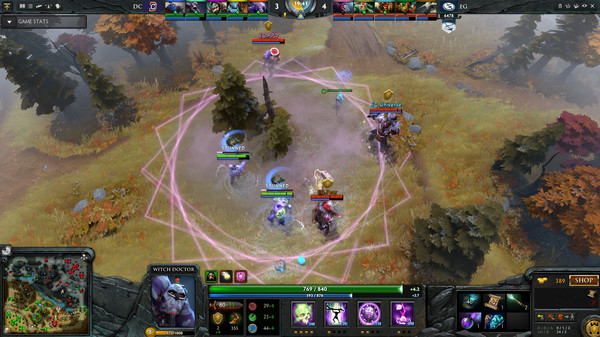
The DOTA 2 tournament at the 2016 Electronic Sports and Gaming Summit (ESGS) last October 30 may have only staked a modest PhP 12,000 prize kitty for the top spot, but in the grand scheme of all things Defense of the Ancients, the event wasn’t even a drop of a ripple in the worldwide tournament pond.
Consider last June’s Manila Major, held at the Mall of Asia Arena, with a total prize pool of a cool US$ 3 million. Or, The International 6, staged in Seattle in August with over US$ 20 million at stake, US$500,000 of which was awarded to the Philippines’ own TNC Gaming. Despite the odds being far from their favor, our 5-man team scored the most surprising upset of the tournament, defeating the mighty two-time Major-winning European OG squad and clinching a 7th/8th finish at the worlds.
DOTA is big money for the truly talented, and, for a country that lacks the average height to be seriously competitive in basketball and the government support needed to develop a Olympic team that can go toe to toe against better funded, better trained athletes, it is obvious that it is in eSports that our nation can kick some major international butt.
With The International’s prize pool hitting levels greater than what’s at stake in the Tour de France or even the Super Bowl, DOTA 2 is the richest game in his global town. Not bad for a game that started out as a mere MOBA (multiplayer online battle arena) mod, albeit a popular one, to the 2002 real-time strategy (RTS) game, Warcraft III: Reign of Chaos. Even before the Valve Corporation released its standalone sequel DOTA 2 in 2013, the game already had major critical mass due to its revered status in Internet cafes and computer shops around the country, especially among every kid and young adult who could not afford their own gaming PCs.
Fast forward to the worldwide explosion of eSports as the wildly popular geek brother to the testosterone jockfests of professional athletics, a competitive entertainment genre that would make it actually cool to spend all your waking hours in front of a computer monitor fighting foes from far away. Following the lead of Valve, which structured its tournaments as the seasonal DOTA Major Championships leading to The International, other eSports leagues and events have pushed DOTA 2 tourneys as their headliners.
In the Philippines, it was the world’s largest eSports company, Germany-based ESL, that broke DOTA ground by holding ESL One Manila, Southeast Asia’s first premier DOTA 2 tournament, at the Mall of Asia. With US$ 250,000 at stake, eight of the world’s best DOTA squads duked it out for two days last April, including PH team Mineski and the eventual 2016 ESL One Manila champion Wings Gaming. Two months later, team OG would win the Manila Major.
Judging by the DOTA 2 worldwide tournament calendar, there are many opportunities for a talented, determined team to make its mark. Rise through the ranks and maybe your squad could be the next qualifiers at the bigger events. Remember, Team TNC brought home PhP24 million for their performance at The International, and Team Fnatic’s Filipino import DJ Mampusti took home a PhP 13 million share of the pot. If that doesn’t whet your appetite, we don’t know what will.